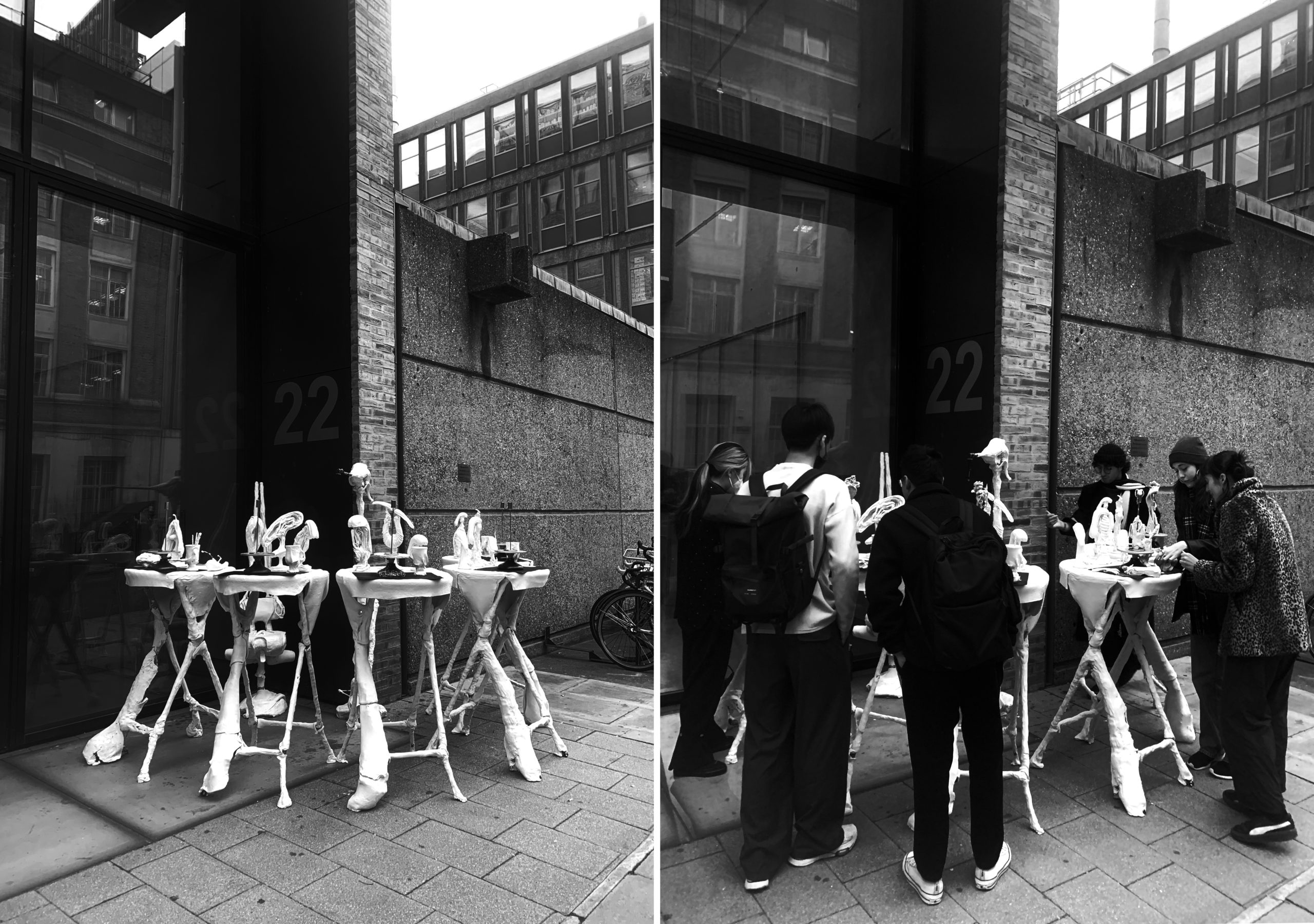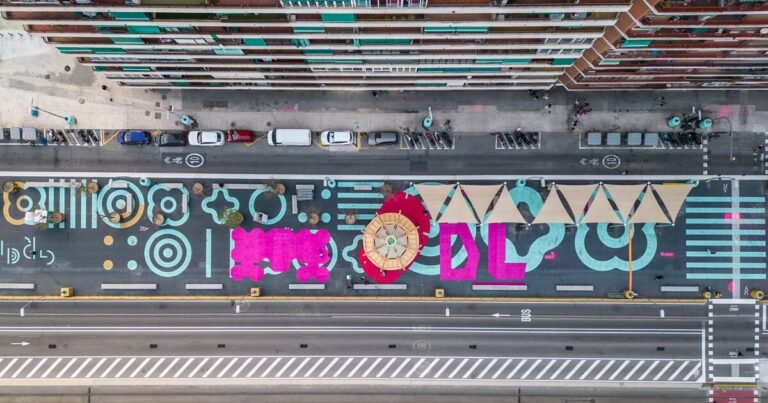“22 Gordon Street” Reimagines the Bartlett School as a Monstrous Manifestation of Architectural Experimentation
Send us a photo. Tell us a story. Win $2,500! Architizer’s 3rd Annual One Photo Challenge is underway with an Early Entry Deadline on May 27, 2022! Start your entry for architecture’s biggest photography competition here.
The 2022 One Rendering Challenge winners have been announced, concluding an incredible competition that celebrates one of the most integral processes in design: rendering. The top Student Prize went to Christian Coackley for “22 Gordon Street” — a mysterious and detailed reimagining of UCL’s famous Bartlett School of Architecture building (where the artist is currently enrolled). The building, previously known as Wates House, famously underwent massive and ambitious refurbishment over the last decade when millions of pounds were invested to open up the façade of the building and reveal new creative spaces within. The rendering, however, is not only concerned with the evolution of the building itself; it uses the architecture school building as a metonym to imagine an alternative model for architectural education and the profession as a whole.
“In light of enduring issues we are facing globally, such as a climate and ecological emergency, schools of architecture must nurture a culture of collaboration in architectural education to meaningfully address them. Therefore the drawing speculates on the third iteration of The Bartlett School of Architecture. In contrast to the building’s previous 2 iterations, Wates House (1975) and The Bartlett (2016), this next installment of the school will be constructed over the course of 1000 years by the students and tutors themselves,” Christian stated. Using Photoshop and ZBrush, the winning rendering meditates on the impermanence of design and the inherently evolutionary nature of building, as structures must adapt with evolving human needs.

22 Gordon Street: In its first iteration as Wates House (1975), and later as The Bartlett (2016).
“The future generations of the building’s inhabitants will recover a lost material culture of hand-crafted ceramics,” imagines Christian. “This interchangeable orchestra of students and tutors will weave themselves together through the poetic symphony of a shared material culture, ushering in a new era in architectural education: The Age of Belonging.”
Architizer’s Editor-in-Chief Paul Keskeys discusses the creative process behind the winning rendering, which included a community engagement process in addition to the more technical considerations. Christian also shares images of his other work.
 Paul Keskeys: Congratulations on your success! What does winning the 2022 One Rendering Challenge mean to you?
Paul Keskeys: Congratulations on your success! What does winning the 2022 One Rendering Challenge mean to you?
Christian Coackley: I feel extremely lucky and grateful for the outcome of the competition as it is a product of the endless support from my family, friends, and tutors who are at the core of why I do what I do. It is truly awesome to be recognized in such a competitive field, however, I also appreciate that ideal outcomes and perfect results are not a true reflection of what this discipline is about.
 What were the primary challenges of conceiving your work, from forming the idea to the actual physical process of rendering?
What were the primary challenges of conceiving your work, from forming the idea to the actual physical process of rendering?
The idea was formed around my interest in experimenting with a socially engaged method of research to inform architectural design. Through the act of creating a ‘Dining Room’ outside of 22 Gordon Street, I was able to host conversations with students, tutors, and passers-by that allowed me to learn more about others’ experiences at the school, and their thoughts on the culture of architectural education. The guests of this occasion were encouraged to add to one of five clay sculptures that had been worked on by a previous guest. The result of the 3-day event was 5 co-created sculptures and a better understanding of what The Bartlett meant to its users.
The physical process of creating the render derived from the approach of taking more time to do one thing, rather than doing many things that take less time. This approach to drawing is one that I have struggled with as it requires placing a level of patience and belief in the design process that I hadn’t done previously.
 Did you use your usual techniques and software for creating this rendering? If you tried something different, how did that go?
Did you use your usual techniques and software for creating this rendering? If you tried something different, how did that go?
Since I wanted the architecture to reflect the very human conversations that took place at ‘The Occasion’, I turned towards the ZBursh software that is used for making character models in games. Within the software I was able to develop a language that allowed for me to abstract the human form into architectural prototypes that could be deployed within the render. One can notice that the render is split between two distinctly different architectural languages. On the right is a skeletal structure that is taken from images of physical clay sculptures created by the guests and I, and on the left is the organic skin that was created using ZBrush. These two contrasting languages eventually begin to weave themselves together over the course of the project. This is shown in one of the projects final interior renders, which depicts the head of school giving Britain’s immortal Queen Elizabeth a tour of the new Bartlett.

Detail of the One Rendering competition winner.
What connection does this image have to you and your personal feelings about architecture?
The image reminds me that architectural education, practices and The Bartlett itself, are all made up of human beings. They represent the potential for skilled and passionate individuals to come together as a collective and create something that could not be achieved in isolation. However, it unfortunately feels that we are still a long way off from establishing a culture of collaboration rather than competition in architectural education.
When first joining The Bartlett, I felt that the only thing that could separate yourself from the rest was by working harder and longer than others. This mindset was not wrong, but it was not disciplined, and I was one of many students unwittingly participating in one of the profession’s systemic issues; long hours culture. This issue stems from the competitive culture that is established through the act of valuing product over process, an aspect that was critiqued by David Nicol in his text ‘Changing Architectural Education’. He proposes that this is ‘most clearly reflected in the conduct and focus of assessment’, where students are often not rewarded directly for their efforts in analyzing the needs of a client or community. Rather this process is seen as an additional aspect that may be included alongside the main conceptual design proposal. Furthermore, the students’ projects are boiled down to a collection of portfolio pages that become a ’tangible product’ for employers to consume.
Do you have any other work that compares to this in terms of lighting, atmosphere and composition?
Instead of responding words, Christian lets his other images speak for themselves:

 What one tip would you give students and architects looking to win next year’s One Rendering Challenge?
What one tip would you give students and architects looking to win next year’s One Rendering Challenge?
I would suggest trying a technique or approach to design that you want to develop further or have never tried before. I feel it is best to never be 100% comfortable in what you’re doing otherwise it can prevent you from discovering things you never previously envisioned. But most importantly… Keep Drawing!
Send us a photo. Tell us a story. Win $2,500! Architizer’s 3rd Annual One Photo Challenge is underway with an Early Entry Deadline on May 27, 2022! Start your entry for architecture’s biggest photography competition here.


